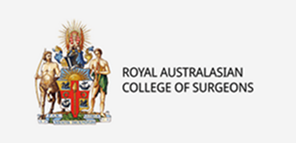- 0401 792 644

- 0401 792 644

Breast reconstruction involves recreating a breast following a mastectomy, either at the same time (immediate reconstruction) or at a later date (delayed reconstruction). Some women choose not to have reconstruction and instead wear an external prosthesis. Regardless of preference, all patients undergoing mastectomy should be informed about the available reconstruction options to make a fully informed decision.
Breast reconstruction can contribute to a sense of emotional recovery and body confidence. Others feel comfortable with a flat chest or prosthesis. There is no right or wrong choice—what matters most is that the decision aligns with your values and comfort. Breast care nurses, psychologists, and peer support groups can help guide your decision.
Some women also choose reconstruction as an opportunity to alter breast size or shape. Adjustments to the opposite breast can help improve symmetry—this is particularly relevant in cases of bilateral (double) mastectomy.
Reconstruction may be performed using:
Not every patient is suited to every method. If multiple options are available, your surgeon will recommend the one that best fits your anatomy, treatment plan, and preferences.
Your care team will advise whether immediate reconstruction (performed at the time of mastectomy) is appropriate, or whether delayed reconstruction (done after cancer treatment such as chemotherapy or radiotherapy) would be safer or more suitable. Surgical decisions are reviewed by a multidisciplinary team including your surgeon, oncologist, radiologist, anaesthetist, and breast care nurse.
Pros:
Cons:
Pros:
Cons:
Implants may be placed during mastectomy or in stages, beginning with a tissue expander. Supporting mesh or biological materials may be used to help position the implant. Fat grafting may also improve contour.
Pros:
Cons:
Uses your own abdominal tissue (fat and skin) to recreate the breast. This is a microsurgical procedure.
Pros:
Cons:
Uses muscle and skin from the upper back. Sometimes combined with an implant.
Pros:
Cons:
Nipple reconstruction may be performed surgically (from local skin or via “nipple sharing”) or using 3D tattooing. Adhesive prosthetic nipples are also an option. Tattoos are typically done under local anaesthetic and may require more than one session. Colour fades over time and touch-ups may be needed.
Dry tattooing can be used to improve the texture or appearance of scars. Patients often report that tattooing greatly enhances realism and self-confidence.
Common surgical risks include:
Yes. Implants used today are medically approved and well-studied. Dr Noushi will explain the safest options.
A very rare cancer, BIA-ALCL, has been associated with some older textured implants. These are no longer used.
Rarely. Surgery might be scheduled slightly later due to surgeon or theatre availability. Complications are uncommon and typically managed without significant delay.
No. If reconstruction would compromise cancer treatment, it would not be offered.
No. Recurrence usually appears superficially and is detectable by exam or imaging.
Only if an implant is used, which can slightly reduce mammogram sensitivity. Adjustments without implants do not affect cancer detection.
Take time to understand your options. You may need several consultations to reach a decision. Breast care nurses and other patients who have undergone reconstruction can provide support and perspective.
If you’re not sure—wait. There is no obligation to choose reconstruction, and you can always consider it later (delayed reconstruction remains an option).



